Stage Fright, Romance and Elvis: All the Biggest Revelations from Barbra Streisand's New Memoir
- Oops!Something went wrong.Please try again later.
- Oops!Something went wrong.Please try again later.
Barbra Streisand gets candid in her new memoir 'My Name Is Barbra,' out now
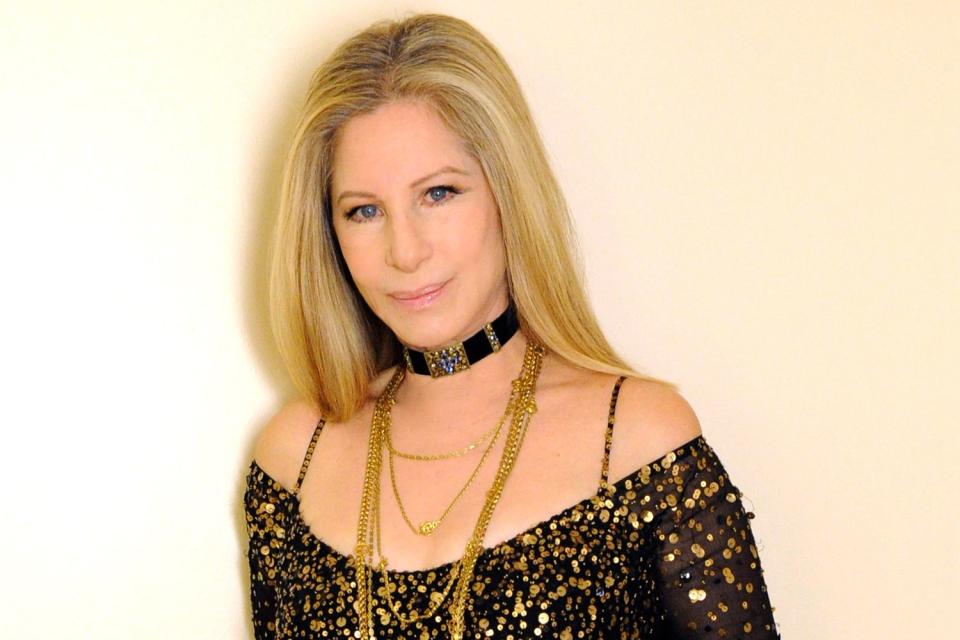
Kevin Mazur/Getty
Barbra Streisand in 2013.Barbra Streisand is opening up like never before.
The legendary star, 81, has mingled with politicians and princesses, starred in and directed award-winning movies and enjoyed flirtations and romances with stars like Marlon Brando and Pierre Trudeau.
Now, though, she’s pulling back the curtain for the first time, revealing in her new memoir My Name Is Barbra the juicy details behind some of her life’s defining moments.
Here, PEOPLE breaks down the book’s biggest revelations, from the unexpected source of her near-lifelong stage fright and surprising tension with Yentl costar Mandy Patinkin, to the long-awaited The Way We Were sequel that never came to be.
Sydney Chaplin, and How He Led to Stage Fright
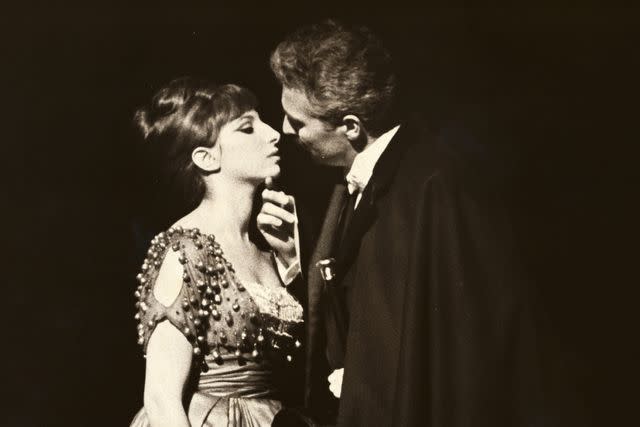
Bettmann/Getty
Barbra Streisand in 'Funny Girl' with Sydney ChaplinThough Streisand was a smash hit in Funny Girl on Broadway, there’s a reason she never returned to the stage.
In her book, the star reveals that she had a tense relationship with her costar Sydney Chaplin, and that he was often cruel to her onstage, which in turn led to panic attacks and stage fright.
When Funny Girl premiered in 1964, Streisand was married to actor Elliott Gould — and while Chaplin was married too, the costars enjoyed a brief flirtation. When Streisand ended that flirtation out of respect for her marriage, she writes that it “wounded [Chaplin’s] vanity and pride,” and in turn made him retaliate with anger. Each night on stage, as they acted before a live audience, he’d curse her out under his breath, just loud enough for her to hear.
“He’d taunt me, calling me a bitch, or worse … the most vicious names,” she writes. “While the audience assumed he was whispering sweet nothings in my ear, he would actually be jeering, ‘You really f---ed up that scene.’”
Streisand says in the book that she was devastated by the nightly interactions, which soon became a “nightmare,” and led to anxiety so strong she’d sometimes throw up before performances.
“This is what started my stage fright. My face would get flushed. I thought, ‘Oh god I’m going to faint,’” she writes. “For the first time in my life, I was frightened that I would forget my lines. Sydney’s behavior threw me completely.”
The star says she eventually confronted Chaplin — who died in 2009 at age 82 — on his behavior and begged him to stop, but he refused, and a meeting with the show’s stage manager did little to help. Streisand says she soon started suffering panic attacks that left her “petrified” to go onstage each night, and that she even once broke down in tears.
Chaplin was brought up on charges before Actors’ Equity in April 1965, though Streisand says he “completely charmed” the all-male panel at his hearing and avoided getting fired.
“I remember Sydney standing onstage, shouting, ‘I don’t need any of you! I’m Charlie Chaplin’s son and I have five hundred thousand dollars in the bank,’” she writes. “Looking back, I can’t believe that this horrible thing happened and I had to endure it for over a year. But I refused to let him destroy me.”
The Romance That Wasn’t
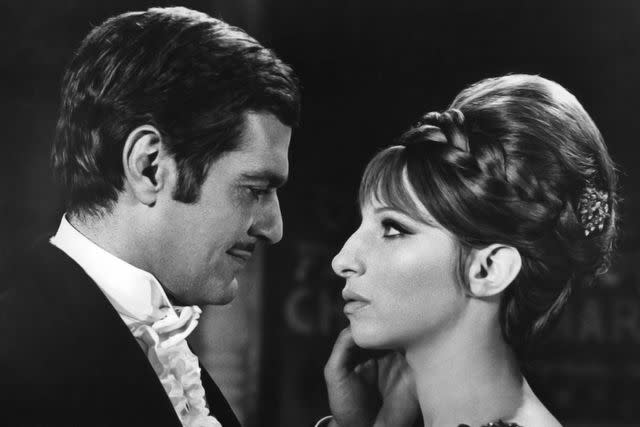
Silver Screen Collection/Getty
Omar Sharif and Barbra Streisand in Funny GirlWhen Funny Girl hit the silver screen in 1968, Omar Sharif was cast in the starring role opposite Streisand. In her book, she says she obliged a dinner invitation from Sharif because she and Gould were “leading separate lives” and she felt lonely.
While she found him to be “good company,” the relationship never progressed further, and Sharif was more smitten than she was. Streisand says he continued to write her letters even after filming wrapped, and was “disappointed” when she turned down his request to meet for a rendezvous in Paris.
She writes that she “didn’t know quite how to react” when he sent her romantic letters, and felt that Sharif was “still living in the fantasy world of the movie.”
“Our attraction to each other worked for the movie, but I couldn’t see a future with him,” she writes.
Getting Divorced
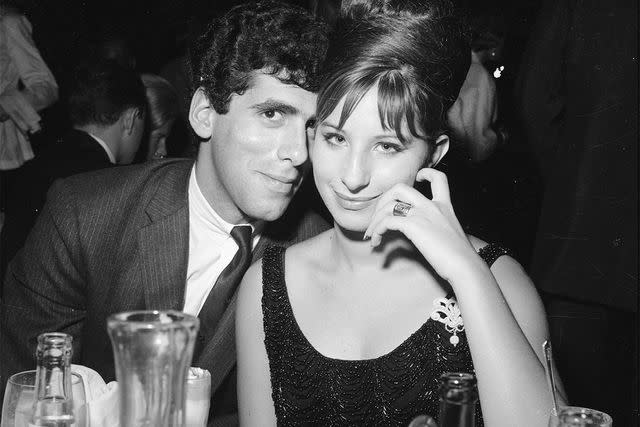
Streisand was just 21 and Gould 25 years old when they tied the knot in 1963, and Streisand writes that the two were “so innocent” and young when they first got together that their union just couldn’t make it as they grew older and matured.
“We succumbed to convention and got married, at an age that now seems ridiculously young,” she writes. “I hadn’t really been ready for marriage in 1963, but I was very ready for a legal separation in 1969. I needed to be on my own and do the exploring I had never done. I wanted adventure. I wanted excitement.”
Don't Meet Your Heroes
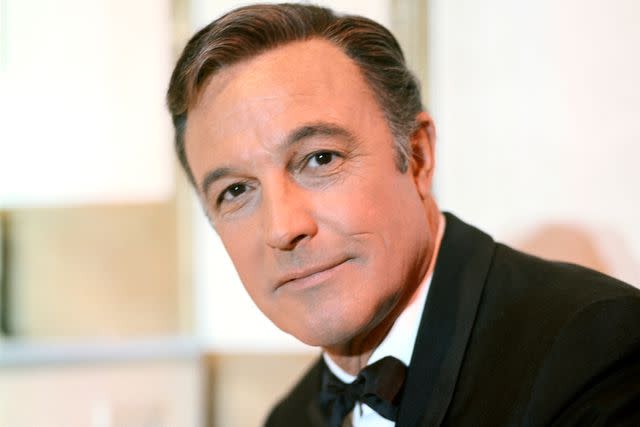
Herb Ball/NBCU Photo Bank/NBCUniversal via Getty
Gene Kelly in 1970.Streisand had a lifelong crush on Gene Kelly. But when he directed her in the 1969 film Hello, Dolly!, he wasn’t exactly how she’d imagined.
The star writes that she was “disappointed” by his attitude on set, and that he’d make “scathing remarks” to women.
“One day he was so rude to a female dancer that I asked him privately, ‘Why were you so mean to her?’ And he basically laughed it off and said, ‘Yeah, I was pretty tough on her, but that’s okay. I used to yell like that at another dancer, and she became my wife,’” Streisand recalls.
She also took issue with costar Walter Matthau’s behavior on set, recalling a time when she suggested a script change and he became irate, questioning her authority and criticizing her talent.
“He looked at me with pure venom and said, ‘You may be the singer in this picture, but I’m the actor! I have more talent in my farts than you have in your whole body!’” she writes. “I was stunned. … I just stood there and was so humiliated that I ran off the set, crying.”
Streisand adds that she not ever remember getting an apology from either Kelly or Matthau following the incident.
The ‘A’ That Started It All
Streisand reveals that she was never fond of her first name, even as a child, and that she’d often ask friends to instead call her Sydney while they played.
As she gained fame, casting agents suggested she change her last name, but Streisand writes that that “felt phony” — and so she settled on removing the middle “a” from her first name, Barbara.
“Now I’d be Barbra … that was different and unique,” she writes in the book. “I liked the way it looked too… and deep down I would still be the same Barbara Joan Streisand, if you see what I mean.”
Her First Time
Streisand’s memoir is filled with candid musings on plenty of old memories — including the time she lost her virginity at 18 years old.
The star says her first “love affair” came when she spent “a few interesting evenings” with an unidentified man, aided by some substances.
“On a night with a full moon, he handed me a cigarette, and I took a puff and went weak in the knees. I thought it was him. Turns out it was marijuana,” she writes. “One thing led to another … I’m not going to go into details. Use your imagination.”
Streisand says that she ran into him the next day, and he simply said hello and kept on walking, leaving her feeling “unseen.”
Presidential Pal
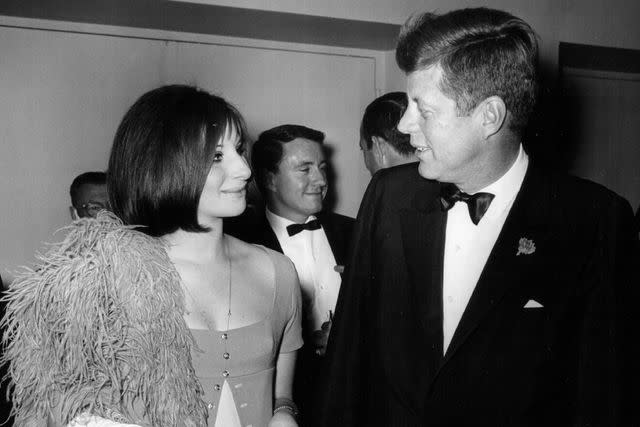
National Archive/Newsmakers
Barbra Streisand and John F. Kennedy in 1963.Streisand met then-President John F. Kennedy at the White House Correspondents’ Dinner in 1963, where she performed a three-song set.
After dinner, she lined up alongside other guests to meet the president in what was supposed to be a quick meet and greet, with no autographs allowed. But when it came time for her moment with Kennedy, he complimented her voice, and asked how long she’d been singing.
“I said, ‘About as long as you’ve been president,’” Streisand writes. “He laughed, and then I did exactly what we were told not to do. I asked him if he would sign a card from the dinner for my mother. When he handed it back to me, I told him, ‘You’re a doll.’”
Streisand says the phrase “just slipped out,” but that she did think fondly of Kennedy, whom she likened to a “rock star.” She also writes that she wound up losing the signed card before she even got home, but still has the gown she wore that night.
A Canadian Romance
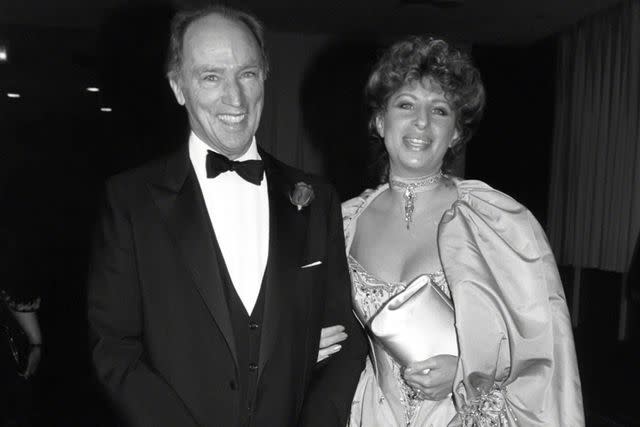
Robin Platzer/Images/Getty
Barbra Streisand and Pierre Trudeau circa 1983.After first meeting at the Funny Girl premiere in London, Streisand struck up a friendship and eventual romance with Pierre Trudeau, then the prime minister of Canada.
Streisand writes that she enjoyed seeing someone in the spotlight for his own reasons, as it allowed her to “stay in the shadows a bit,” and that they bonded during trips to visit one another (During one trip to Ottawa, she recalls Trudeau diving naked into an icy lake then rolling in the snow as the watched from a bench in a fur coat).
Though Trudeau reminded her of her late father, Streisand was uncomfortable with their 23-year age gap, and “a bit scared of the intensity” of their relationship, as she felt he was ready to settle down. Eventually, their romance fizzled, and Streisand writes that although she admired him, “there was something missing.”
“My brain was in love, but not my body,” she writes, noting that the two remained close friends until his death in 2000.
Birth of A Star Is Born
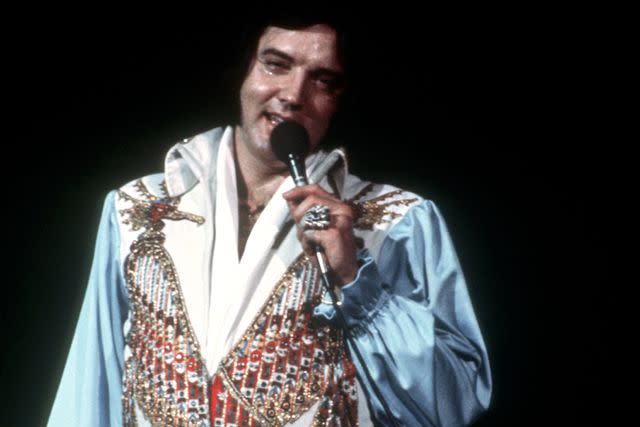
Ron Galella Collection via Getty
Elvis PresleyStreisand felt strongly that Judy Garland’s 1954 version of A Star Is Born was excellent, and that there was no need for a new team of filmmakers to try again.
“Why tamper with something that was already perfect? I didn’t want to do it,” she writes.
Still, she had a commitment to the production company First Artists to deliver a film by a certain date, and realized that there was potential to make a new version of A Star Is Born that focused more on the love story between the main characters and made a statement on the women’s liberation movement.
Though Kris Kristofferson eventually starred opposite Streisand in the 1976 film, there was a brief moment where producer Jon Peters, then Streisand’s boyfriend, pushed to hire his “idol” Elvis Presley.
Streisand writes in the book that she and Peters flew to Las Vegas to meet with the King, and caught one of his shows before heading backstage to see him and his manager, Colonel Parker.
Related: Barbra Streisand Says Fear that Surgery Would Impact Her Legendary Voice Made Her Resist a Nose Job
Presley showed up late, and explained his tardiness by telling Streisand that he’d had a girl backstage making him “crazy” with her incessant talking, so she was currently flying around in his plane, and he wasn’t sure whether he should let her down.
Though the “Heartbreak Hotel” singer was “interested” in the role of John Norman Howard, it didn’t pan out, as Parker allegedly wanted more money than the team could afford.
“In any event, I had no regrets about Elvis. Kris was it,” she writes.
Making Yentl
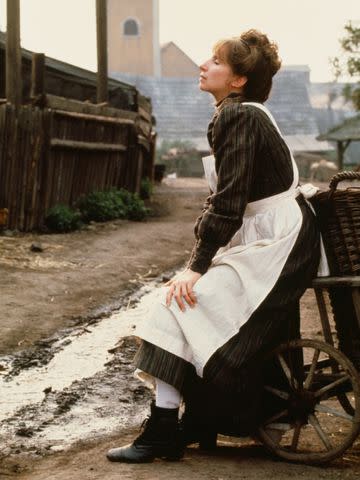
Hulton Archive/Getty
Barbra Streisand on the set of Yentl in 1983.Streisand was just a baby when her father, Emanuel, died in 1943. But years later, she connected with a medium, and through the experience was eventually moved to make her 1983 film Yentl, in which she starred, directed, wrote and produced.
Streisand says she was stunned when the medium was able to identify her father’s nickname, Manny, and that she watched in awe as an apparent spirit banged out the word “sorry” and the phrase “sing proud.”
Not long after, she realized that the name on the tombstone next to her dad’s was the uncommon name Anshel — which is the name of Yentl’s dead uncle (or brother, as it becomes in the movie), and the name the character uses when she disguises herself as a man.
“This was the sign I was looking for, telling me that I was meant to make this movie,” she writes. “Here I was, exploring all the ideas that could be part of Yentl, and discovering my father at the time same … His life was cut short, and in a sense, this was my chance to extend it…. He would live in on in me, and in Yentl.”
Later, Streisand writes that she faced roadblocks as she set out to cast the film. She’d cast Mandy Patinkin in a leading role, and wanted Carol Kane as Hadass, but was unable to get her wish.
“The studio wouldn’t let me hire her. They said no. Absolutely not. You can’t have three Jewish people as the leads,” she writes. “I was shocked. What difference does that make? Did they expect me to vet actors according to their religion? And by the way, had nobody noticed that this was, after all, a movie about Jews?”
Drama with Mandy Patinkin
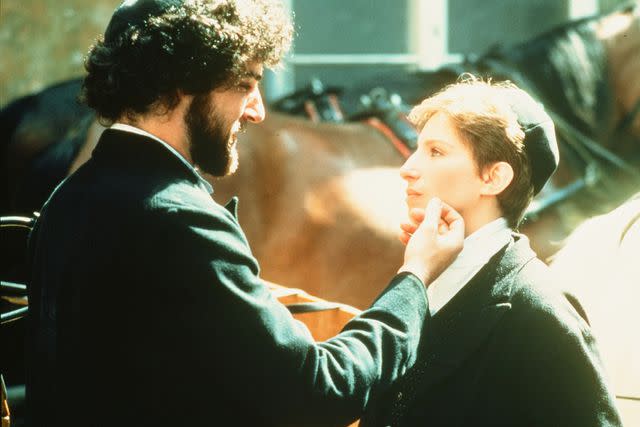
Hulton Archive/Getty
Mandy Patinkin and Barbra Streisand in Yentl in 1983.Patinkin played Yentl’s love interest Avigdor in the film — but a week into shooting, Streisand writes that he was unable to look her in the eye. She called him into her dressing room for a chat, and asked why his mood had soured.
“His face crumpled and he said, ‘I thought we were going to have a more personal relationship,’” she writes in the book. ‘’What?’ I had no idea what he was talking about. ‘I thought we were going to have an affair.’”
Streisand says she looked at Patinkin “as if he were crazy,” and sayas she’d never have an affair with an actor she was directing — not to mention she was married and not attracted to him.
“I didn’t want to hurt his feelings, so I simply said, ‘I don’t operate that way,’” she writes. “Tears rolled down his cheeks. And I suddenly realized what this was really about. I wasn’t paying enough attention to him as a man… or at least not the kind of attention he wanted.”
Streisand says she scolded him for his behavior and warned Patinkin that she’d replace him in the movie if he didn’t shape up (She also writes that years later, the two had a conversation in which he revealed he gave her a “hard time” on set because he was “scared").
The star adds that she initially wanted there to be a love scene between Yentl and Avigdor in the movie, but couldn’t bring herself to film one with Patinkin, and rewrote it.
Clearing Up the "Streisand Effect"
In 2003, Streisand sued photographer Kenneth Adelman and Pictopia.com for violating her privacy, as an aerial photograph of her Malibu mansion had been made publicly available online as part of a project documenting coastal erosion.
The photo hadn’t gotten much attention until Streisand’s lawsuit — and after she sued, it blew up in the public eye, amplifying further the information she’d wanted to keep private. The term “Streisand effect” was coined shortly after, and is now used to describe a situation in which someone’s efforts to hide, remove or censor information backfire, and they inadvertently increase awareness.
In the book, Streisand writes that she wants to set the record straight on the matter, and only cared about the fact that her name was attached to the photo of her house.
“Let me say this loud and clear. Contrary to the explanation on Wikipedia, I did not attempt to ‘suppress’ a photograph of my house,” she writes. “My issue was never with the photo … it was only about the use of my name attached to the photo.”
Streisand says that all of the homes photographed for the project were labeled using latitude and longitude, and not by names of the owners, except for her and four other celebrities’ houses. She explains that she had safety concerns over her exact address being made public.
“I wasn’t trying to remove the photo. All I asked was that this man please just treat me like everyone else and remove my name, for security reasons,” she writes. “But he refused.”
Streisand says the lawsuit was her “only recourse,” and that while she felt at the time that she was “standing up for a principle,” it was a “mistake” in hindsight.
No Sequels
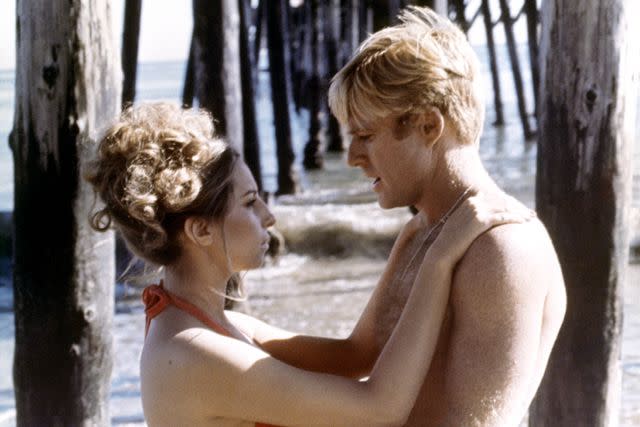
Sunset Boulevard/Corbis via Getty
Barbra Streisand and Robert Redford in The Way We WereStreisand writes that for 20 years, she’d tried to make progress on a sequel to her 1973 film The Way We Were, in which she starred opposite Robert Redford, but nothing was quite right.
Eventually, she began to write one herself, and put together a treatment, though she knew she was “fighting a losing battle,” as Redford is not fond of sequels.
Streisand says she and Redford did talk about the potential sequel, though, and she even gave him a copy of the treatment for him to read. He never called back about it.
“I didn’t want to pressure Bob, so I never called him either. Frankly, I think age was a big concern for him,” she writes. “It didn’t bother me as much. After all, we were both too old to be in college in the original. When the acting is good, I think the audience suspends disbelief. But I had to face the fact that the moment had passed, and the sequel will live only in my mind.”
For more People news, make sure to sign up for our newsletter!
Read the original article on People.

